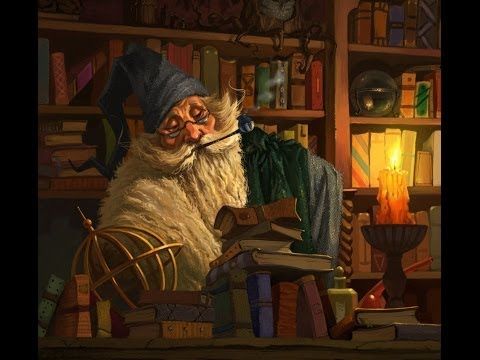I am new to the world of a Game Master (GM). I started my foray into becoming a GM through a trial by fire. I developed my own campaign from scratch (also known as a homebrew) where I created the story, characters, encounters, side quests, loot… practically everything. My hope with this series is to inspire others and demystify the enigma behind what a GM does. Spoiler alert: they just provide an entire world for the players to romp around in.

A GM’s work is never done. After my first session with my players, the one where everyone creates their character and gets all excited about playing, I realized just how much still needed to be done! Well, at least I though a lot of stuff still needed to be done. Not having a clue what the players will do almost incited a panic in me. I didn’t want their first ever session be a trainwreck! So I started planning. I planned a lot.
So, when session 1, the first official session where the players actually do something, started, I was prepared. I was over prepared. I had the first story arc all planned out! I was ready for whatever my players threw at me. I had the first encounter as a tutorial for combat (since they were new and I was new to the system). I had a story hook they would have the option to pick up after the battle that seemed really engaging. I had the location for the story hook mapped out. I had the enemies inside the location ready to go. I had loot tables for what they could loot when they finish conquering the area. I had the next story arc ready to go. It spiraled a bit from there…
This, of course, wasn’t entirely necessary. I underestimated the session pace and the learning curve of combat. The combat took the entire session and the heroes almost died (whoops). I didn’t account for a player being unable to attend and then opting for their character to remain in the tavern. While this did play well to that character’s background, it left the group without a healer. Having an apathetic healer in your group is… interesting. I ended up having an NPC step up and provide minimal support to counteract the missing player. This is probably the only thing that kept the players alive. I had already planned for one of the enemies to escape, but there’s always the risk of the players preventing that!
So, combat broke out, players decided what to do, most of them jumped in to help out. The very first thing they wanted to do was talk… They wanted to talk to the bandits that were actively murdering their townsfolk in search of something. This definitely caught me off guard. They did end up cornering one of the enemies, who was clearly losing, and convinced them to switch sides. The very next turn they were slain by one of their previous allies with a lucky roll. This was totally unplanned and happened to be a memorable moment in combat, one that would never have happened with a thoroughly planned encounter. The lesson for me in the first session was “plan just enough.”
My intention with this post is not to say “don’t plan” but, rather, instead “plan just enough” to get the story moving. The details will become clear as the story progresses. Keep in mind the direction, destination, and challenges in the way of the heroes and you will do just fine filling in the gaps with all of the juicy details that unfold based on player action. Creating a scaffolding for your arc and letting the players build the details is how I intend to run this campaign after that first session. I’ll keep you posted how that works out. And, hey, if it doesn’t I can always change it right?
With this in mind, for Session 2, I have a loose idea of what could happen between the players picking up a letter and eventually finding themselves at the Factory where Hammer is. I have some idea of what Hammer would do if the players ignore him as a threat. Hammer almost has his own story at this point and thinking about that helped me flesh out the behavior of his own faction. It also helped flesh out the type of leader he is and how it would affect his allies. That next arc I planned out now has some relevance if the players ignore Hammer. How it plays out is not known to me yet though. Those details are left to the player’s decisions and could prove interesting based on their actions. I hope to let the players inform me of how they want to play (through their actions and decisions) and that will let me build a story framework that’s more engaging as it would lend itself to their play style. At least, that’s the goal. We’ll see how fantastically that works out…